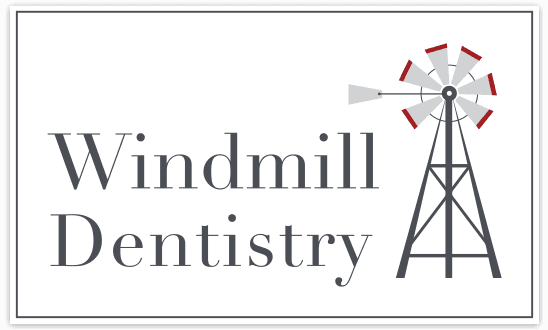Periodontal Dentistry
As we have learned more about oral health, we have a better understanding of the importance of oral hygiene that includes routine professional cleanings and evaluation. Gum disease is a silent, progressive condition that millions of people unknowingly have. In fact, gum disease is the greatest cause of tooth loss in adults. Gum disease treatment and prevention can help save your teeth and oral health.
Risks of Gum Disease
As with most diseases, there are some factors that can place certain people at a higher risk for gum disease than others. The two biggest risk factors are diabetes and smoking. They both increase the severity of the disease and the speed at which it occurs. Other risk factors include:
Poor oral hygiene
Plaque is the main cause of gum disease and cavities.
It occurs when bacteria builds up on the teeth and gums.
Poor oral hygiene
The CDC states that over 70% of Americans aged
65 and older are suffering from gum disease.
Genetics
Studies have shown that up to 30% of the population
may be genetically predisposed to gum disease.
Medication
Many very common medications from oral contraceptives to
heart medications affect the health of the teeth and gums.
Stress
It has been extensively researched and proven that stress lowers the ability of the immune system to fight off disease which can affect the health of the gums.
Nutrition
Poor nutrition can have adverse effects on the health of the
teeth and gums along with weakening the bodies ability to fight
off infection.
Hormonal Changes
During pregnancy and menopause, many women experience hormonal changes that cause the gum tissue to become more sensitive and places them at greater risk.
Process of Gum Disease
Everyone has plaque. We all naturally have bacteria, both good and bad in our mouths, and as we eat and drink the bacteria and sugars meet and form plaque. The problem arises when plaque begins to build up. It causes cavities and when it collects around the gum line it can lead to gum disease.
Gum disease actually occurs in stages. Learning to recognize the stages and their symptoms is an important step in prevention and knowing when to seek treatment.
STAGE 1
Gingivitis
The first stage is gingivitis. It’s mild and often goes unnoticed without regular dental checkups. Catching it at this stage is so important because up until now it’s completely reversible. If gingivitis goes untreated, it will develop into periodontitis.
STAGE 2
Periodontitis
The first stage is gingivitis. It’s mild and often goes unnoticed without regular dental checkups. Catching it at this stage is so important because up until now it’s completely reversible. If gingivitis goes untreated, it will develop into periodontitis.
STAGE 3
Advanced Periodontitis
The first stage is gingivitis. It’s mild and often goes unnoticed without regular dental checkups. Catching it at this stage is so important because up until now it’s completely reversible. If gingivitis goes untreated, it will develop into periodontitis.
Dr. Bird’s priority is prevention so that you can live the healthiest and happiest life possible. Regular checkups and cleanings allow for close monitoring so that if gum disease does occur it never progresses past gingivitis. Call us today to schedule an appointment and keep prevention at the core of your oral health care plan.
Early Gum Disease Treatment
Recently the Centers for Disease Control (CDC) published research that said, of Americans aged 30 and older, over 50% suffer from stage two gum disease. This means that preventative measures are not being taken seriously. Dr. Bird has your best interest at the forefront of his practice and prevention is just that! Catching gum disease before it advances is the only way to completely reverse the damage. The most important way to ensure your gum health is to come in for professional cleanings and exams at least twice a year.
Treating Gum Disease
Once gum disease has progressed, the goal becomes to get the infection under control and restore the gum tissue. A technique called scaling is used. Scaling is basically a very deep cleaning that removes all the plaque, bacteria and tartar that has build up in the pockets that have formed around your teeth and gums. After this is done, root planning helps the gums reattach to the tooth by smoothing out the roots.
Periodontal Treatment at Home
Untreated gingivitis progresses to periodontitis, a condition affecting deeper parts of the gums, and threatening bone tissue. Once periodontitis has set in, pockets begin to form around affected teeth, giving bacteria more places in which
to settle.
Early recognition of gum disease, before pockets form and tissue has begun to deteriorate, is vitally important to the elimination of gum disease. This condition, as it progresses, poses a threat to the entire body.
Gum Disease Prevention
Without a doubt, the most important part of periodontal therapy is prevention. Gum disease is one of
the most common and most preventable diseases. Here are some of the keys to prevention:
Brush
Twice a day is recommended but after every meal is ideal. Don’t forget to brush your tongue as it is a prime spot for bacteria to hide and is often overlooked.
Floss
Your brush can’t get in between those tight spaces where bacteria and food particles hide. Flossing is absolutely key to preventing gum disease.
Regular Dental Visits
When you visit us at Windmill Dentistry, we don’t just clean your teeth and send you on your way. We are always making sure your teeth, gums and entire mouth are in prime health and that there are no warning signs present. We also clean areas you may just not be able to reach.
